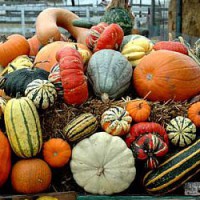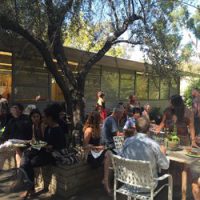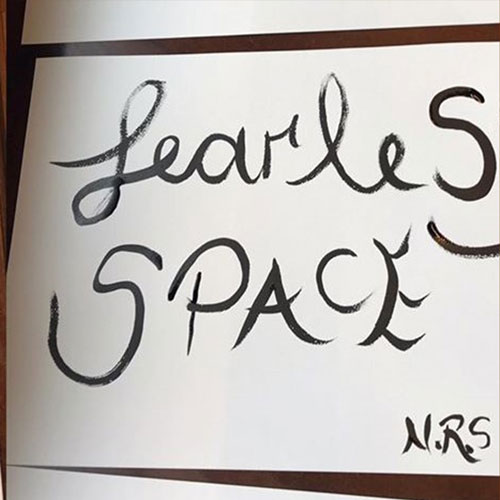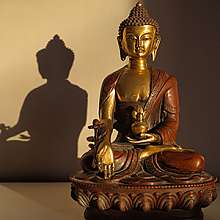Harvest of Peace – our newest Nyida Day
One u pon a time there was a young, incarnate Tibetan meditation master who managed to escape cultural genocide in 1959. He landed in India, studied at Oxford University and contemplated British culture for a few years. After meeting Western students while co-administering a small Buddhist monastery in Scotland, he made drastic changes to his personal life and ended up immigrating to the USA (via Canada) with his young wife.
pon a time there was a young, incarnate Tibetan meditation master who managed to escape cultural genocide in 1959. He landed in India, studied at Oxford University and contemplated British culture for a few years. After meeting Western students while co-administering a small Buddhist monastery in Scotland, he made drastic changes to his personal life and ended up immigrating to the USA (via Canada) with his young wife.
The rest of the story is pretty well-known by now. He spent a brief time at Tail of the Tiger (now called Karme-Choling) in Vermont. Then Ven. Chogyam Trungpa Rinpoche accepted a teaching position at UC Boulder (CO). He eventually settle there, traveled the lecture circuit wherever invited, and did a lot of observing of American culture, such as it was in the early 1970’s.
As a community of devoted students gathered around VCTR in Boulder and other of his students started meditation groups elsewhere, the Vidyadhara (as he was later known,) strongly encourage a sense of “community”, especially as he rolled out his unique Shambhala terma teachings. His personal commentaries on the terma spoke about creating “enlightened society.” As his students discussed their family traditions and backgrounds, he listened deeply to their conflicts within the context of a democratic but relatively new society (the USA with deep roots in Western European culture.) From that perspective, our Founder wanted to emphasize community celebrations with appreciation and generosity practice. He felt it made sense to celebrate the natural rhythm of the four seasons as demarcations of our year. His Tibetan culture marked the lunar New Year with with major significance. Eventually he invited us to observe traditional Losar, (occurring in Feb. or March, depending on the lunar cycle,) by renaming it “Shambhala Day.”
It became traditional for the Boulder sangha to gather together in their shrine room to hear the Vidyadara’s Shambhala Day Address. A telephone hook-up to other centers was eventually worked out as well. I first heard such an address in 1982 in NYC where our local sangha practiced a sunrise Sadhana of Mahamudra together, heard VCTR’s address, had n incredible brunch for 200 and socialized until about 2 p.m. There must have been a fund-raising component, but I don’t recall any of it particularly.
Over the years, former Boulder students have shared with me descriptions of their enormously popular Nyida Day – Mid-Summer’s Day. The Vidyadhara loved it! Held outdoors with lines of viewing tents and much pageantry, it sounds rather like a medieval jousting event (but no jousting!) There were processions, horses, games, music, food, hanging out. One of these events featured a hot-air balloon, so I was told….
Nyida Days are explained as Shambhala’s four seasonal holidays, “Nyi” abbreviated from the Tibetan word “nyima” for sun, and “da” from “dawa” meaning moon. Hence a reference to lunar cycles and transition.
Our Winter Solstice celebration was instigated by the Vidyadhara (who had a young family himself.) Children’s Day is around to the time of year the dominant culture celebrates Christmas. As in many Northern cultures, shorter days, darkness and winter cold invite cheerful bonfire, candlelight and community feasting to mark this seasonal transition. Some Shambhala centers with very few children don’t do much whereas others mark Winter Solstice with a community gatherings of food, music, story-telling and good cheer. So-called “dharma brats” (those who grew up with Shambhala parents,) will tell you nostalgically how as young ones, they enjoyed some winter magic, and a visit from the Shambhala King and Queen. Perhaps they remember getting small gifts or candy, and enjoyed a chaotic, family-oriented meal or hor d’oeurves, or cider and cookies.
Harvest of Peace never quite made it onto the roster of holidays during Trungpa Rinpoche’s lifetime. He mentioned the idea of four seasonal holidays, but I seem to recall the first Autumnal Equinox celebration taking place mandala-wide in the mid-1990’s when Sakyong Mipham Rinpoche had taken his seat and suggested we mark this time of year officially. So it’s our newest holiday!
Fall is another common time in many cultures to gather and enjoy the harvest, each other, share spiritual connections, express gratitude and raise communal lungta to get through the dark days ahead. I’ve enjoyed seeing us as Western Buddhists evolve this “new” holiday! It’s a wonderful tribute to our founder to continue exploring the richness and meaning of this time of year, the seasonal connection with nature, and a precious opportunity to share the mind of our indefatigable teacher, the Kongma Sakyong, who addresses us live, or through a recorded message. He does this twice a year, and of course, our lovely Sakyong Wangmo and the princesses sometimes greet us as well. (She particularly likes to surprise us at the Winter Solstice, since Children’s Day is a perfect time to greet families and our greater community to convey Mukpo family well-wishes!)
 It’s fun to celebrate Harvest of Peace with local sangha, seeing old friends and make new ones, and hear from our hardworking leadership about the health of our Center. Do we need an excuse for all students to be together, meet, greet, and break bread? Sometimes yes! We have disparate lives and busyness, sometimes taking us further astray than we want. So this is a glorious opportunity to connect! Group practice helps us relax and focus on shared intention, especially now that we do the Shambhala Sadhana, a bonding liturgy with noble aspirations affirming our basic goodness and that of society.
It’s fun to celebrate Harvest of Peace with local sangha, seeing old friends and make new ones, and hear from our hardworking leadership about the health of our Center. Do we need an excuse for all students to be together, meet, greet, and break bread? Sometimes yes! We have disparate lives and busyness, sometimes taking us further astray than we want. So this is a glorious opportunity to connect! Group practice helps us relax and focus on shared intention, especially now that we do the Shambhala Sadhana, a bonding liturgy with noble aspirations affirming our basic goodness and that of society.
Because we make HoP an occasion to enrich our local center, donations toward capital improvements or projects our leaders would like to see to fruition are encouraged. We can share in making this collective vision happen, even if our means are limited. It’s great to encourage generosity, even if we mostly give emotional support and applause!
With Harvest of Peace, the peace reference is largely to our own inner peace which is shaped by our meditation practice (though it’s fine to project that out. and offer peace to any conflicted region of the world or groups.) And we participate in this renewal and gratitude ceremony with our sangha, dedicating it to the benefit of others. We listen to the Sakyong’s message and in turn, offer to each other sense of connectedness and inspiration by participating, giving what we can to our Center, and sharing the vision of living in an enlightened society every day.
Sylvie Stevenson has been a student in the Shambhala lineage since 1979. A member of SMCLA, she lives in Tucson AZ. Before moving to Arizona, she spent 20 years in Halifax, Nova Scotia, Canada, (also known as Kalapa.)









